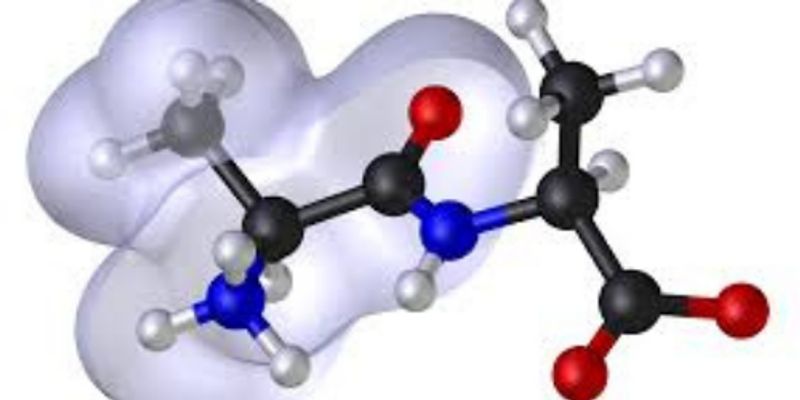Molecular Modelling
Molecular modelling lies somewhere between theory, observation and experiment and is being called the fourth axis of chemistry. Basing on theoretical chemistry methods and experimental data, it involves a range of computerized methods or techniques to predict molecular and biological properties.
-
MAR 11, 2020 | 10:30 AMThe accumulation of neurotoxic amyloid beta peptides and/or neurofibrillary tangle formation are key pathological hallmarks of neurodegenerative diseases including but not limited to Alzheim...Speaker: Michael Heneka, PhDMAR 11, 2020 | 10:30 AMThe neural basis of simple rhythmic and reflexive behaviors such as swimming and gill withdrawal have been successfully studied in nudibranchs and other gastropod molluscs because the brains...Speaker: Paul Katz, PhD , Jeff Lichtman, MD, PhD , William Frost, PhD , Deidre Lyons, PhD , Vince Lyzinski, PhD, B.Sc, M.Sc, M.Sc.E.Presented at: Neuroscience Virtual Event Series 2020
MAR 11, 2020 | 9:00 AMAlthough neuroscience has provided a great deal of information about how neurons work, the fundamental question of how neurons function together in a network to produce cognition has been di...Speaker: György Buzsáki, PhD , Attila Losonczy , Mark Schnitzer , Ivan SolteszPresented at: Neuroscience Virtual Event Series 2020
MAR 11, 2020 | 6:00 AMThe locomotion of humans and other animals requires a seamless flow of information from sensory modalities all the way to the motor periphery. As such, locomotion is an excellent system for...Speaker: Michael Dickinson, PhD , Anthony Azevedo, PhD , Clare Howard, PhD , Luke Brezovec , Sasha Rayshubskiy , Emily PalmerPresented at: Neuroscience Virtual Event Series 2020
MAR 11, 2020 | 6:00 AMWe present here a framework to generate a realistic multiscale circuit model of the larval zebrafish brain – the multiscale virtual fish (MVF). The model will be based on algorithms in...Speaker: Florian Engert, PhD , Jeff Lichtman, MD, PhD , Haim SompolinskyPresented at: Neuroscience Virtual Event Series 2020
FEB 26, 2020 | 9:00 AMCRISPR revolutionized gene editing, but multi-target screening remains a complex goal. In addition, the fast pace of CRISPR technology development has brought sophisticated options for libra...Speaker: Andrew Ravanelli, PhDFEB 26, 2020 | 7:30 AMRecent advances in DNA sequencing and omics-based capabilities are revealing incredible therapeutic opportunities and quickly transforming drug discovery. Molecularly targeted drugs aim to e...FEB 05, 2020 | 8:00 AMC.E. CREDITSThe compendium of newly emerging and currently available hemophilia and anticoagulant treatments, while offering new choices for improved patient care, can create significant levels of inter...Speaker: Donna Castellone, MS, MASCP, MT(ASCP) SHJAN 01, 2020 | 6:00 AMThe OrganoPlate is a microtiterplate based Organ-on-a-Chip platform for high throughput drug safety and efficacy screening. It contains up to 96 cell culture chambers that allow co-culture o...Speaker: Sebastiaan Trietsch, PhDPresented at: Drug Discovery & Development Virtual Event Series 2020
JAN 01, 2020 | 6:00 AMLearning Objectives: 1. Describe the exposure response relationships with vancomycin and acute kidney injury 2. Define biomarkers that may be useful to improve Precision Dosing...Speaker: Marc Scheetz, PharmD, MSc, FCCP, FCPPresented at: Drug Discovery & Development Virtual Event Series 2020
JAN 01, 2020 | 6:00 AMMicrophysiological systems (MPS), also known as organ-on-chips, are small scale in vitro cell cultures which mimic facets of tissue or organ level function. MPS frequently utilise primary hu...Speaker: Tomasz Kostrzewski, PhDPresented at: Drug Discovery & Development Virtual Event Series 2020
JAN 01, 2020 | 6:00 AMIn Andalman et al, 2018, we explored the activity of over 10,000 neurons across more than 15 regions imaged simultaneously in larval zebrafish in a novel behavioral challenge paradigm. Compl...JAN 01, 2020 | 6:00 AMThe study of biological function in intact organisms and the development of targeted cellular therapeutics necessitate methods to image and control cellular function in vivo. Technologies su...JAN 01, 2020 | 6:00 AMThe dopamine D4 receptor (D4R) is enriched in the prefrontal cortex where it plays important roles in cognition, attention, decision making and executive function. Novel D4R-selective ligand...JAN 01, 2020 | 6:00 AMNormal behavior in any moving animal, including humans, relies on communication between motor systems that control movements, and the sensory systems we use to guide these actions. A critica...JAN 01, 2020 | 6:00 AMThe aim of the lecture is to give an insight into the use of 3D liver micro tissues (3D liMTs) in drug discovery and translational safety. In translational toxicology, 3D LiMTs have a high i...JAN 01, 2020 | 6:00 AMAccurate DNA replication is essential to transmit the genetic information from one generation to another. However, replication is frequently challenged by barriers that originate from exogen...Speaker: Chames Kermi, PhD, PharmDPresented at: Drug Discovery & Development Virtual Event Series 2020
JAN 01, 2020 | 6:00 AMChaperone networks are dysregulated with aging, but whether compromised Hsp70/Hsp90 chaperone function disturbs neuronal resilience is unknown. Stress‐inducible phosphoprotein 1 (STI1; STIP1...JAN 01, 2020 | 6:00 AMOpen Science has changed research by making data accessible and shareable, contributing to replicability to accelerate and disseminate knowledge. However, for rodent cognitive studies the av...JAN 01, 2020 | 6:00 AMMisfolded and accumulated neurodegenerative disease associated proteins (NDAPs, such as tau and alpha-synuclein) represent the major pathological hallmark in Alzheimer’s and Parkinson&...JAN 01, 2020 | 6:00 AM“The poor translatability of early-stage preclinical models is a major setback in oncology drug development. Immortalized cell lines, that are extensively used in drug screens, undergo...JAN 01, 2020 | 6:00 AMThe liver plays a critical role in the metabolism and clearance of more than 70% of marketed drugs. Furthermore, toxicity to the liver is a major reason for preclinical and clinical drug fai...JAN 01, 2020 | 6:00 AMWith an increasing push to improve safety, efficacy, and efficiency throughout the drug development pipeline, researchers are evermore looking to improve the predictive capacity of their in...DEC 04, 2019 | 7:00 AMDATE: December 4, 2019TIME: 7:00am PST, 10:00am EST, 4:00pm CET Do you know how it feels when you just quickly want to redo an experiment that your colleague did, or an experim...
MAR 11, 2020 | 10:30 AM
The accumulation of neurotoxic amyloid beta peptides and/or neurofibrillary tangle formation are key pathological hallmarks of neurodegenerative diseases including but not limited to Alzheim...
Speaker:
Michael Heneka, PhD
MAR 11, 2020 | 10:30 AM
The neural basis of simple rhythmic and reflexive behaviors such as swimming and gill withdrawal have been successfully studied in nudibranchs and other gastropod molluscs because the brains...
Speaker:
Paul Katz, PhD
, Jeff Lichtman, MD, PhD
, William Frost, PhD
, Deidre Lyons, PhD
, Vince Lyzinski, PhD, B.Sc, M.Sc, M.Sc.E.
Presented at: Neuroscience Virtual Event Series 2020
MAR 11, 2020 | 9:00 AM
Although neuroscience has provided a great deal of information about how neurons work, the fundamental question of how neurons function together in a network to produce cognition has been di...
Speaker:
György Buzsáki, PhD
, Attila Losonczy
, Mark Schnitzer
, Ivan Soltesz
Presented at: Neuroscience Virtual Event Series 2020
MAR 11, 2020 | 6:00 AM
The locomotion of humans and other animals requires a seamless flow of information from sensory modalities all the way to the motor periphery. As such, locomotion is an excellent system for...
Speaker:
Michael Dickinson, PhD
, Anthony Azevedo, PhD
, Clare Howard, PhD
, Luke Brezovec
, Sasha Rayshubskiy
, Emily Palmer
Presented at: Neuroscience Virtual Event Series 2020
MAR 11, 2020 | 6:00 AM
We present here a framework to generate a realistic multiscale circuit model of the larval zebrafish brain – the multiscale virtual fish (MVF). The model will be based on algorithms in...
Speaker:
Florian Engert, PhD
, Jeff Lichtman, MD, PhD
, Haim Sompolinsky
Presented at: Neuroscience Virtual Event Series 2020
FEB 26, 2020 | 9:00 AM
CRISPR revolutionized gene editing, but multi-target screening remains a complex goal. In addition, the fast pace of CRISPR technology development has brought sophisticated options for libra...
Speaker:
Andrew Ravanelli, PhD
FEB 26, 2020 | 7:30 AM
Recent advances in DNA sequencing and omics-based capabilities are revealing incredible therapeutic opportunities and quickly transforming drug discovery. Molecularly targeted drugs aim to e...
FEB 05, 2020 | 8:00 AM
C.E. CREDITS
The compendium of newly emerging and currently available hemophilia and anticoagulant treatments, while offering new choices for improved patient care, can create significant levels of inter...
Speaker:
Donna Castellone, MS, MASCP, MT(ASCP) SH
JAN 01, 2020 | 6:00 AM
The OrganoPlate is a microtiterplate based Organ-on-a-Chip platform for high throughput drug safety and efficacy screening. It contains up to 96 cell culture chambers that allow co-culture o...
Speaker:
Sebastiaan Trietsch, PhD
Presented at: Drug Discovery & Development Virtual Event Series 2020
JAN 01, 2020 | 6:00 AM
Learning Objectives: 1. Describe the exposure response relationships with vancomycin and acute kidney injury 2. Define biomarkers that may be useful to improve Precision Dosing...
Speaker:
Marc Scheetz, PharmD, MSc, FCCP, FCP
Presented at: Drug Discovery & Development Virtual Event Series 2020
JAN 01, 2020 | 6:00 AM
Microphysiological systems (MPS), also known as organ-on-chips, are small scale in vitro cell cultures which mimic facets of tissue or organ level function. MPS frequently utilise primary hu...
Speaker:
Tomasz Kostrzewski, PhD
Presented at: Drug Discovery & Development Virtual Event Series 2020
JAN 01, 2020 | 6:00 AM
In Andalman et al, 2018, we explored the activity of over 10,000 neurons across more than 15 regions imaged simultaneously in larval zebrafish in a novel behavioral challenge paradigm. Compl...
JAN 01, 2020 | 6:00 AM
The study of biological function in intact organisms and the development of targeted cellular therapeutics necessitate methods to image and control cellular function in vivo. Technologies su...
JAN 01, 2020 | 6:00 AM
The dopamine D4 receptor (D4R) is enriched in the prefrontal cortex where it plays important roles in cognition, attention, decision making and executive function. Novel D4R-selective ligand...
JAN 01, 2020 | 6:00 AM
Normal behavior in any moving animal, including humans, relies on communication between motor systems that control movements, and the sensory systems we use to guide these actions. A critica...
JAN 01, 2020 | 6:00 AM
The aim of the lecture is to give an insight into the use of 3D liver micro tissues (3D liMTs) in drug discovery and translational safety. In translational toxicology, 3D LiMTs have a high i...
JAN 01, 2020 | 6:00 AM
Accurate DNA replication is essential to transmit the genetic information from one generation to another. However, replication is frequently challenged by barriers that originate from exogen...
Speaker:
Chames Kermi, PhD, PharmD
Presented at: Drug Discovery & Development Virtual Event Series 2020
JAN 01, 2020 | 6:00 AM
Chaperone networks are dysregulated with aging, but whether compromised Hsp70/Hsp90 chaperone function disturbs neuronal resilience is unknown. Stress‐inducible phosphoprotein 1 (STI1; STIP1...
JAN 01, 2020 | 6:00 AM
Open Science has changed research by making data accessible and shareable, contributing to replicability to accelerate and disseminate knowledge. However, for rodent cognitive studies the av...
JAN 01, 2020 | 6:00 AM
Misfolded and accumulated neurodegenerative disease associated proteins (NDAPs, such as tau and alpha-synuclein) represent the major pathological hallmark in Alzheimer’s and Parkinson&...
JAN 01, 2020 | 6:00 AM
“The poor translatability of early-stage preclinical models is a major setback in oncology drug development. Immortalized cell lines, that are extensively used in drug screens, undergo...
JAN 01, 2020 | 6:00 AM
The liver plays a critical role in the metabolism and clearance of more than 70% of marketed drugs. Furthermore, toxicity to the liver is a major reason for preclinical and clinical drug fai...
JAN 01, 2020 | 6:00 AM
With an increasing push to improve safety, efficacy, and efficiency throughout the drug development pipeline, researchers are evermore looking to improve the predictive capacity of their in...
DEC 04, 2019 | 7:00 AM
DATE: December 4, 2019TIME: 7:00am PST, 10:00am EST, 4:00pm CET Do you know how it feels when you just quickly want to redo an experiment that your colleague did, or an experim...
























